The Victorious Youth
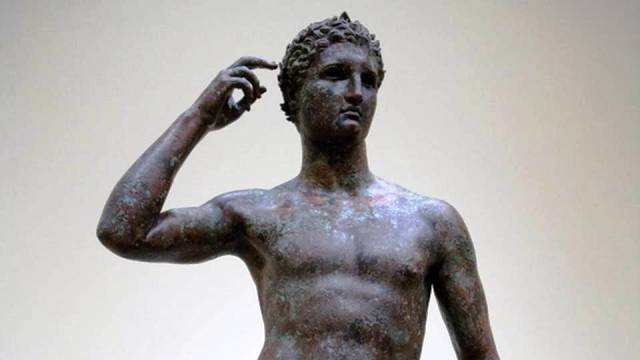
Known by its Italian name Atleta di Fano, Victorious Youth is a Greek bronze sculpture that was found in the sea of Fano on the Adriatic coast of Italy. It was built between 300 and 100 BC and is currently among the collections of the J. Paul Getty Museum in California. Historians believe that the statue was once a part of the group of sculptures of victorious athletes in Olympia and Delphi.
Artemision Bronze
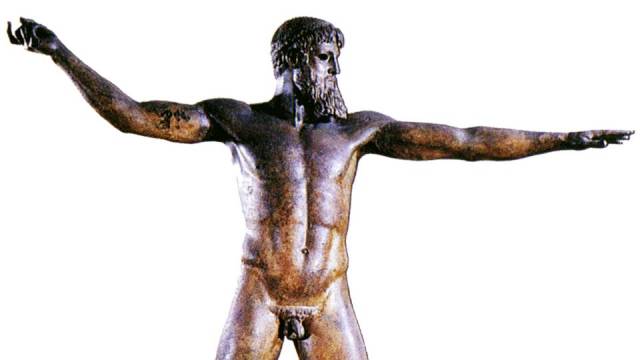
An ancient Greek sculpture that was recovered from the sea of Cape Artemision, the Artemision Bronze is believed to represent either Zeus or Poseidon. There are still debates over the subject of this sculpture because its missing thunderbolt rules out the possibility that it is Zeus, while its missing trident also rules out the possibility that it is Poseidon. It has always been associated with ancient sculptors Myron and Onatas.
Statue of Zeus at Olympia
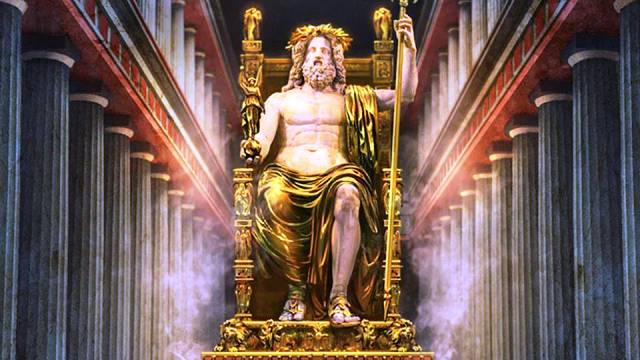
The Statue of Zeus at Olympia is a 13-meter statue characterized by a giant seated figure. It was built by a Greek sculptor named Phidias and is currently erected at the Temple of Zeus in Olympia, Greece. The statue is made of ivory and wood and depicts Greek god Zeus sitting on a cedar wood throne festooned with ivories, gold, ebonies and other precious stones. It is considered today as one of the Seven Wonders of the Ancient World.
Statue of Athena Parthenos
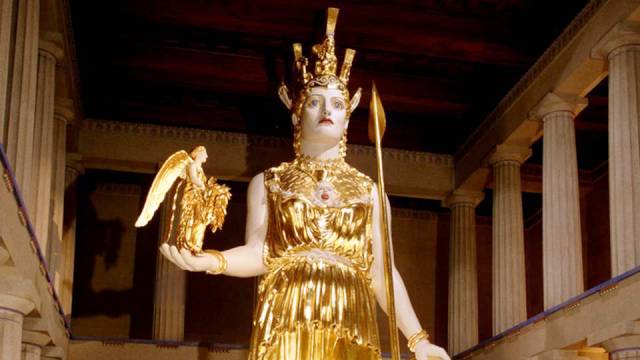
Athena Parthenos was the name given to a gigantic chryselephantine statue of the Greek goddess Athena discovered inside the Parthenon in Athens. Made of silver, ivory and gold, it was sculpted by the renowned ancient Greek sculptor Phidias and is considered today as the most famous cult image of Athens. It was ruined by a fire that took place in 165 BC but was repaired and housed again in Parthenon in the 5th century.
Lady of Auxerre
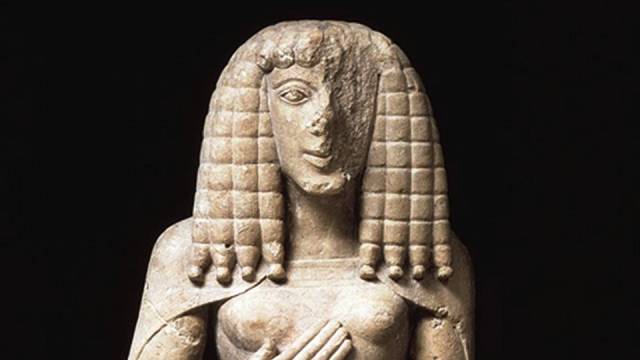
The 75-cm Lady of Auxerre is a Cretan sculpture currently housed in the Louvre Museum in Paris. It depicts an archaic Greek goddess during the 6th century, Persephone. A curator from Louvre named Maxime Collignon found the mini statue inside a storage vault in the Museum of Auxerre in 1907. Historians believe that the sculpture was created during the 7th century, when Greece was moving on from its Dark Age.
Antinous Mondragone
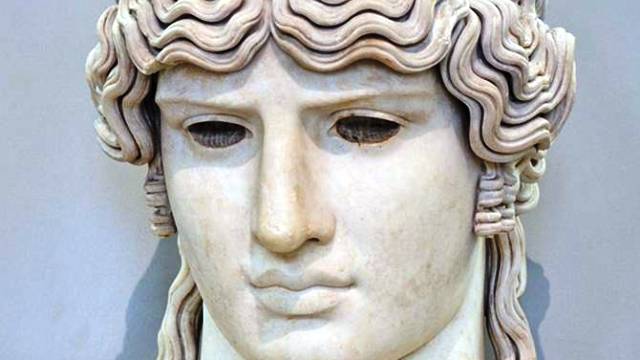
A 0.95-meter high marble statue of God Antinous, Antinous Mondragone is among the massive group of acrolithic cult statues built to worship Antinous as a Greek god. When it was found at Frascati during the 17th century, it was identified as the god Antinous because of his striated eyebrows, serious expression and head that was twisted down. It was bought in 1807 for Napoleon and is currently exhibited at the Louvre Museum.
Strangford Apollo from Anafi
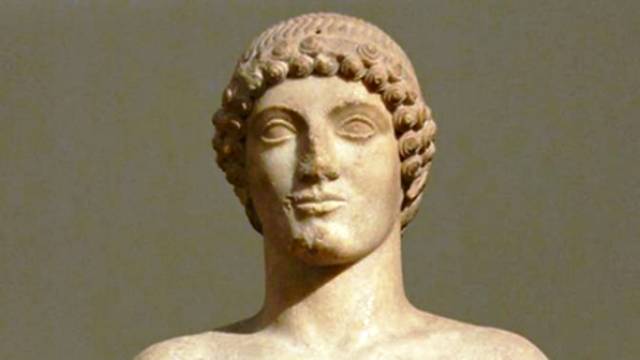
An ancient Greek kouros sculpture made of marble, the Strangford of Apollo was built sometime between 500 and 490 BC and was created in honor of Greek god Apollo. It was discovered on the island of Anafi and was named after diplomat Percy Smith, the 6th Viscount Strangford and the real owner of the statue. It is currently housed in the 15th room of the British Museum.
Anavyssos Kouros
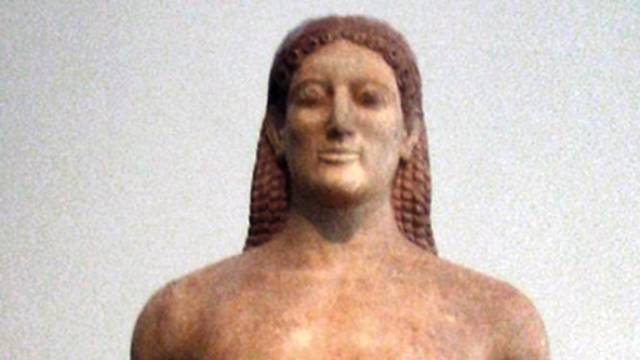
Discovered in Anavyssos in Attica, Anavyssos Kouros is a marble kouros that once served as a grave marker for Kroisos, a young and noble Greek warrior. The statue is most notable for its archaic smile. Standing 1.95 meters high, Anavyssos Kouros is a free-standing sculpture that was built between 540 and 515 BC and is currently exhibited at the National Archaeological Museum of Athens. Below this statue is an inscription saying, “stop and show pity beside the marker of Kroisos, dead, whom, when he was in the front ranks, raging Ares destroyed.”
Biton and Kleobis
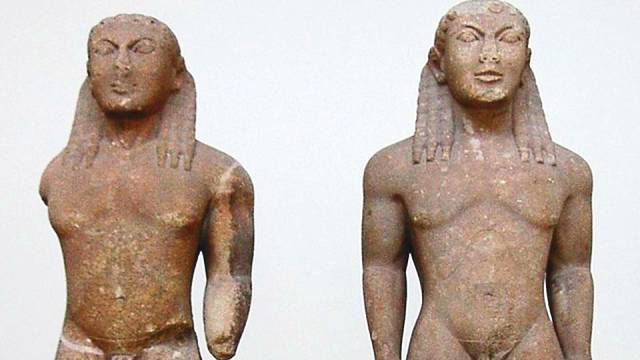
Created by Greek sculptor Polymides of Argos, Biton and Kleobis is a pair of archaic Greek statues created by the Argives in 580 BC to worship the two human brothers related by Solon in the legend entitled Histories. The statue is now inside the Delphi Archaeological Museum in Delphi, Greece. Originally built in Argos, Peloponnese, the pair of statues was found at Delphi with inscriptions on the base identifying the two figures as Kleobis and Biton.
Hermes of Praxiteles
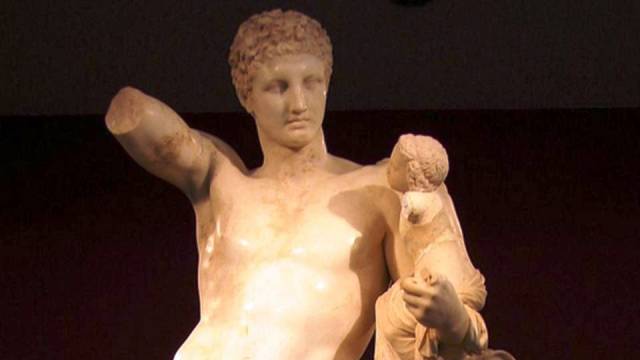
Alexander the Great
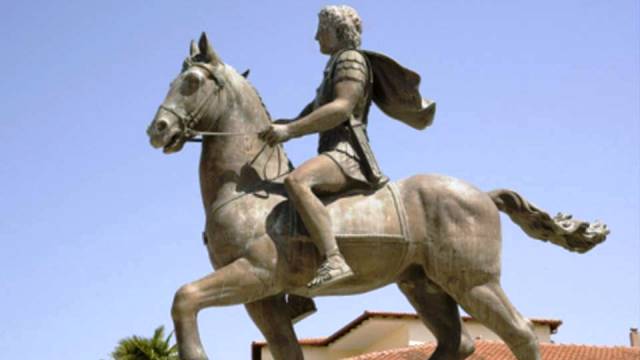
The statue of Alexander the Great was discovered inside the Pella Palace in Greece. Coated with marble patina and made of bonded marble, the statue was built in 280 BC to honor Alexander the Great, the popular Greek hero who sprawled over several parts of the world and led battles against Persian Armies, particularly in Granicus, Issus and Gaugamela. The statue of Alexander the Great is now among the Greek art collections of the Archaeological Museum of Pella in Greece.
Peplos Kore
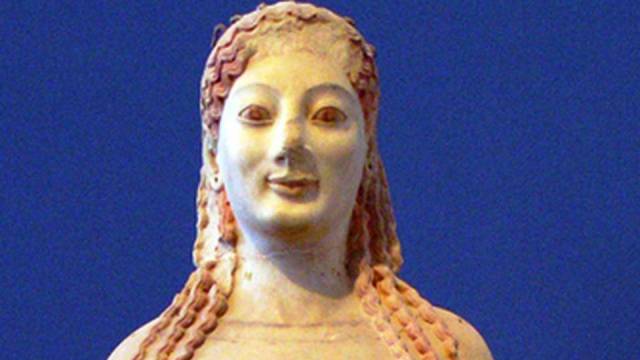
Recovered from the Athenian Acropolis, Peplos Kore is a stylized image of the Greek goddess Athena. Historians believe that the statue was created to serve as a votive offering during the ancient times. Made during the Archaic period of Greek art history, Peplos Kore is characterized by the stiff and formal pose of Athena, her majestic tresses and archaic smile. It initially appeared in polychrome but only traces of its original colors can be observed today.
The Ephebe of Antikythera
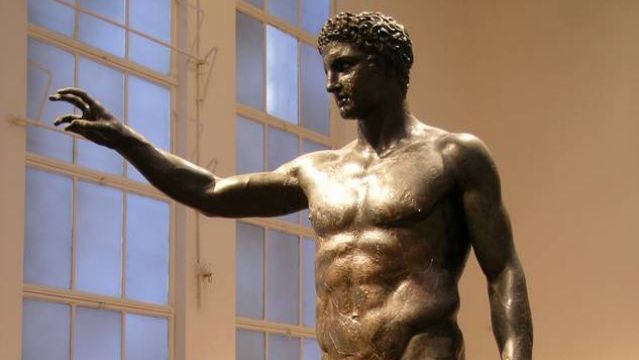
Made of fine bronze, The Ephebe of Antikythera is a statue of a young man, god or hero holding a spherical object in his right hand. Believed to be a product of Peloponnesian bronze sculpture, this statue was recovered in an area off a primordial shipwreck near the island of Antikythera and is believed to be one of the works of the famous sculptor Euphranor. It is currently exhibited in the National Archeological Museum of Athens.
Charioteer of Delphi
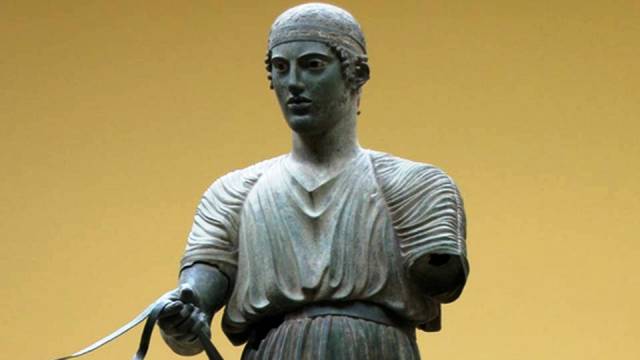
More commonly known as Heniokhos, the Charioteer of Delphi is one of the most popular statues that survived the Ancient Greece. This life-size bronze statue depicts a chariot driver that was recovered in 1896 at the Sanctuary of Apollo in Dephi, where it was first erected during the 4th century to memorialize the victory of a chariot team in an ancient Pythian Games. Originally a part of a massive group of statuary, Henaikhos is now exhibited at the Dephi Archaeological Museum.
Harmodius and Aristogeiton
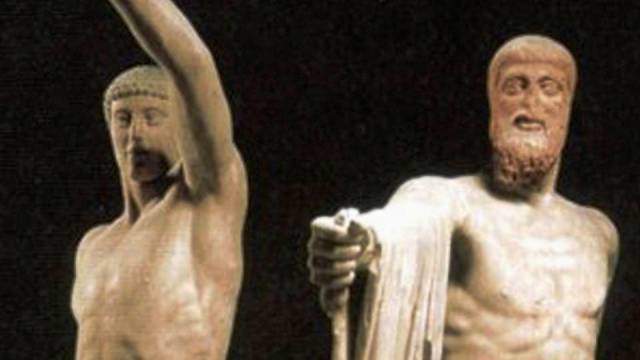
Harmodius and Aristogeiton was built following the establishment of democracy in Greece. Created by Greek sculptor Antenor upon the commission of Cleisthenes, the statue was made of bronze and was the first statue in Greece to have been paid for out of public funds. It was built to honor both men, whom the ancient Athenians considered as the preeminent symbols of their democracy. It was first erected in Kerameikos in 509 A.D. along with the other heroes of Greece.
Aphrodite of Knidos
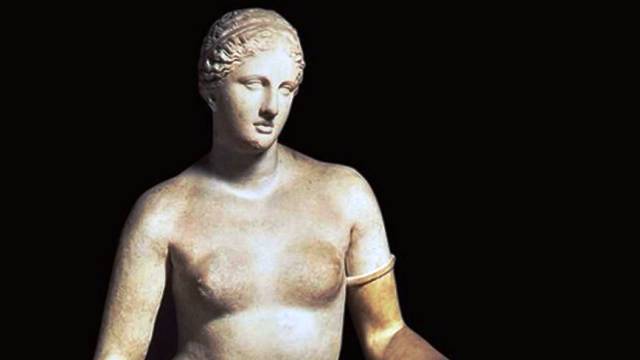
Known as one of the most popular statues created by the ancient Greek sculptor Praxiteles, the Aphrodite of Knidos was the first life-size representation of the nude Aphrodite. Praxiteles built the statue after he was commissioned by Kos to create a statue depicting the beautiful goddess Aphrodite. Despite being considered a cult image, the masterpiece became a tourist attraction in Greece. Its original copy did not survive a massive fire that once took place in the Ancient Greece, but its replica is currently exhibited at the British Museum.
Winged Victory of Samothrace
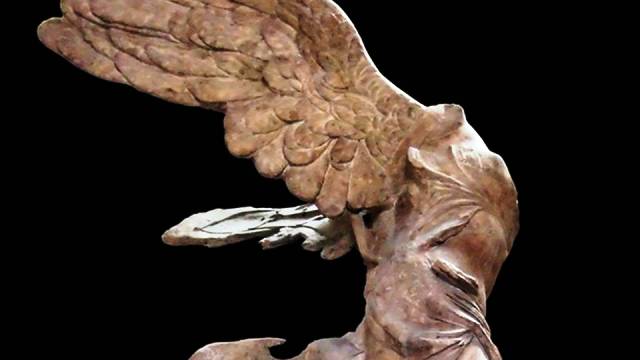
A 200 B.C.- marble sculpture depicting the Greek goddess Nike, the Winged Victory of Samothrace is considered today as the greatest masterpiece of Hellenistic sculpture. It is currently displayed at Louvre and is among the most celebrated original statues in the world. It was created between 200 and 190 B.C. not to honor the Greek goddess Nike but to honor a sea battle. It was first erected by Macedonian general Demetrius following his naval victory in Cyprus.
King Leonidas I at Thermoplylae
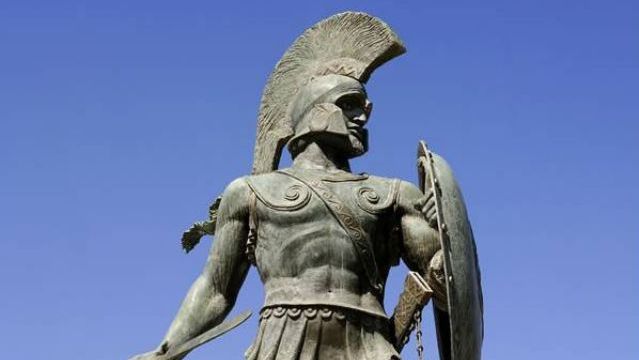
King Paul of Greece erected the statue of the Spartan king at Thermopylae back in 1955 in memory of the heroism King Leonidas I had shown during the Battle at the same location against the Persians in 480 BC. A sign was placed under the statue, which reads, “Come and Take”. These were the very words of challenge that Leonidas blurted when King Xerxes and his army asked them to drop their weapons.
Achilles Wounded

Achilles Wounded is a depiction of the Iliad hero named Achilles. This ancient Greek masterpiece captures his anguish of death after being wounded by the lethal arrow. Made of alabaster stone, the original statue is currently situated at the Achilleion Residence of Queen Elizabeth of Austria in Cofu, Greece.
Dying Gaul
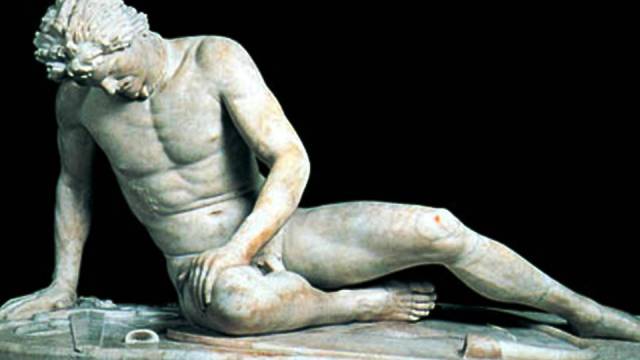
Lacoon and His Sons
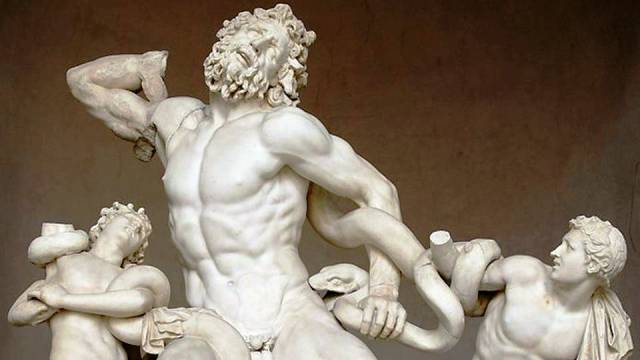
A statue currently situated at the Vatican Museum in Rome, Lacoon and his Sons is also known as the Lacoon Group and was originally created by three great Greek sculptors from the island of Rhodes, Agesander, Polydorus and Athenodoros. This life-size statue is made of marble and depicts a Trojan priest named Lacoon, together with his sons Thymbraeus and Antiphantes, being throttled by sea serpents.
Colossus of Rhodes
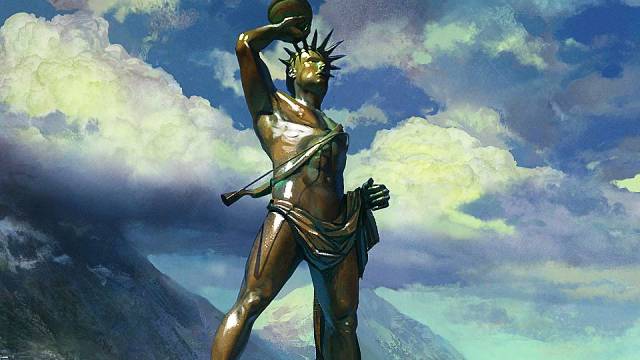
A statue depicting the Greek Titan named Helios, Colossus of Rhodes was first erected in the city of Rhodes by a man named Chares of Lindos sometime between 292 and 280 B.C. Considered today as one of the Seven Wonders of the Ancient World, the statue was built to honor the victory of Rhodes over the ruler of Cyprus during the 2nd century, Antigonus I Monophthalmus. Known as one of the tallest statues of the Ancient Greece, the original statue was destroyed by an earthquake that hit Rhodes in 226 B.C.
The Discus Thrower of Myron
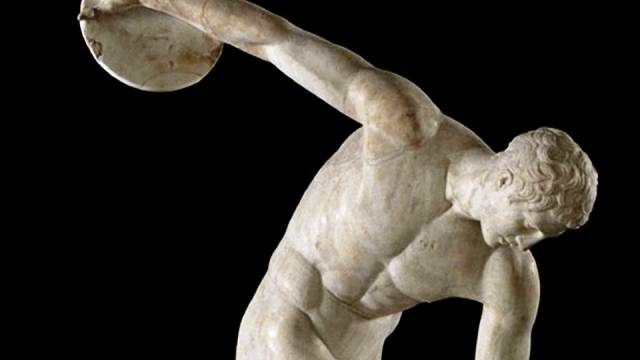
Diadoumenos
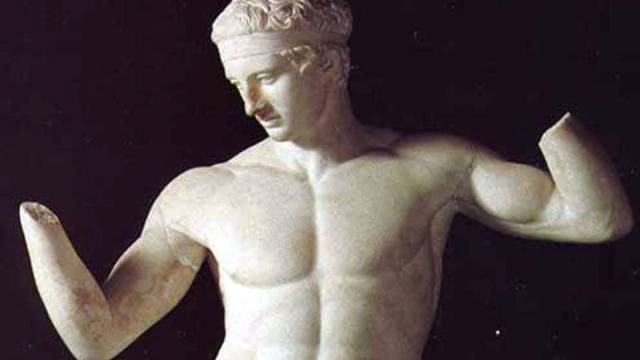
Recovered from the island of Delos, The Diadem Wearer is an ancient Greek sculpture that was built during the 5th century. The original statue that was recovered in Delos and is currently among the statutory collections of the National Archaeological Museum in Athens.
Trojan Horse
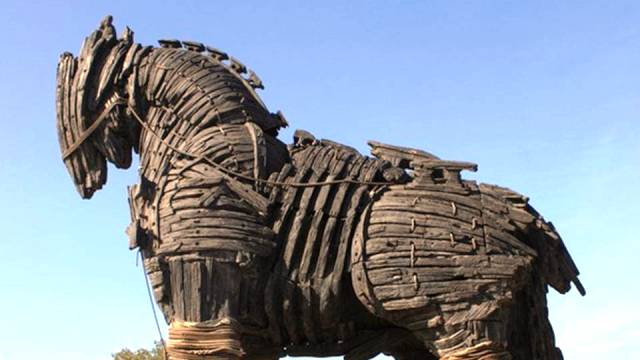
Made of bonded marble and coated with a special archaic bronze patina, the Trojan Horse is an Ancient Greek sculpture that was built between 470 BC and 460 BC to represent the Trojan Horse in Homer’s Iliad. The original masterpiece survived the devastation of the Ancient Greece and is currently displayed at the Archaeological Museum of Olympia, Greece.



























